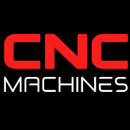The Evolution of Manufacturing Robots to Modern Cobots: Creating Flexibility, Safety, and Higher Productivity

The Evolution of Manufacturing Robots to Modern Cobots: Creating Flexibility, Safety, and Higher Productivity
Introduction
The manufacturing industry has undergone significant transformation over the past few decades, driven by advancements in automation and robotics. From the early days of manufacturing robots to the rise of modern collaborative robots (cobots), these technologies have continuously evolved to meet the changing needs of industries. This article explores the journey from traditional manufacturing robots to cobots, highlighting their differences, evolving applications, and how they contribute to increased flexibility, safety, and productivity.
The Rise of Manufacturing Robots
Early Automation
The introduction of robots in manufacturing dates back to the 1960s, with the advent of the first industrial robots. These robots were designed to perform repetitive tasks with high precision and speed, revolutionizing production lines. Early robots, such as the Unimate, were primarily used in automotive manufacturing for tasks like welding and assembly, which required consistency and durability.
Characteristics of Traditional Robots
- High Speed and Precision: Traditional robots are known for their ability to perform tasks quickly and accurately, making them ideal for high-volume production.
- Fixed Programming: Early robots were programmed to perform specific tasks repeatedly. Changing their functions required reprogramming, which could be time-consuming and costly.
- Safety Concerns: Traditional robots operated in fenced-off areas to ensure human safety. Their lack of awareness and adaptability posed significant risks if humans entered their workspace.
The Emergence of Collaborative Robots (Cobots)
What Are Cobots?
Collaborative robots, or cobots, are designed to work alongside human workers, enhancing their capabilities and ensuring a safer work environment. Unlike traditional robots, cobots are equipped with advanced sensors, artificial intelligence (AI), and machine learning algorithms, enabling them to adapt to dynamic environments and perform a variety of tasks.
Key Differences Between Traditional Robots and Cobots
- Flexibility: Cobots are highly adaptable and can be easily reprogrammed to perform different tasks. This flexibility allows manufacturers to quickly respond to changing production needs.
- Safety: Cobots are built with safety features such as force sensors and collision detection, allowing them to operate safely in close proximity to humans. These features eliminate the need for safety cages and create a more collaborative workspace.
- Ease of Use: Cobots are user-friendly and can be programmed through intuitive interfaces. This ease of use reduces the need for specialized programming skills and allows operators to quickly set up and deploy cobots.
Evolving Applications of Cobots
Enhancing Flexibility
Cobots' ability to handle multiple tasks makes them ideal for industries that require versatility. In electronics manufacturing, for instance, cobots can be used for assembling small components, testing devices, and packaging finished products. Their adaptability ensures that production lines can be reconfigured with minimal downtime.
Improving Safety
Cobots enhance workplace safety by taking over hazardous tasks and working in collaboration with human operators. In the pharmaceutical industry, cobots handle tasks like mixing chemicals and filling vials, reducing the risk of exposure to harmful substances. Their built-in safety features ensure that any unexpected contact with humans results in immediate cessation of movement, preventing injuries.
Boosting Productivity
Cobots increase productivity by working alongside humans to complete tasks more efficiently. In the food and beverage industry, cobots assist in packaging, quality control, and palletizing, speeding up production processes while maintaining high standards of hygiene and accuracy. Their ability to work continuously without fatigue further enhances productivity.
Case Study: Cobots in Action
Background
A medium-sized electronics manufacturing company sought to improve its production efficiency and safety by integrating cobots into its assembly line. The company faced challenges with high labor costs, repetitive strain injuries among workers, and frequent reconfiguration of production lines to meet changing customer demands.
Implementation
The company deployed a fleet of cobots equipped with AI and machine learning capabilities. These cobots were assigned tasks such as assembling circuit boards, performing quality inspections, and packaging finished products. Operators received training on programming and interacting with the cobots to ensure seamless integration.
Results
- Increased Productivity: The company experienced a 30% increase in productivity as cobots worked alongside human operators to complete tasks more quickly and accurately.
- Enhanced Flexibility: The ease of reprogramming cobots allowed the company to adapt its production lines to new products with minimal downtime, reducing changeover times by 50%.
- Improved Safety: The cobots' advanced safety features led to a significant reduction in workplace injuries. Employees reported fewer repetitive strain injuries, and the overall work environment became safer and more collaborative.
The evolution from traditional manufacturing robots to modern cobots marks a significant milestone in the manufacturing industry. Cobots bring a new level of flexibility, safety, and productivity to production processes, making them an invaluable asset for manufacturers worldwide. As technology continues to advance, the applications and capabilities of cobots will only expand, driving further innovation and efficiency in manufacturing. Embracing this evolution ensures that manufacturers stay competitive and responsive to the demands of an ever-changing market.


